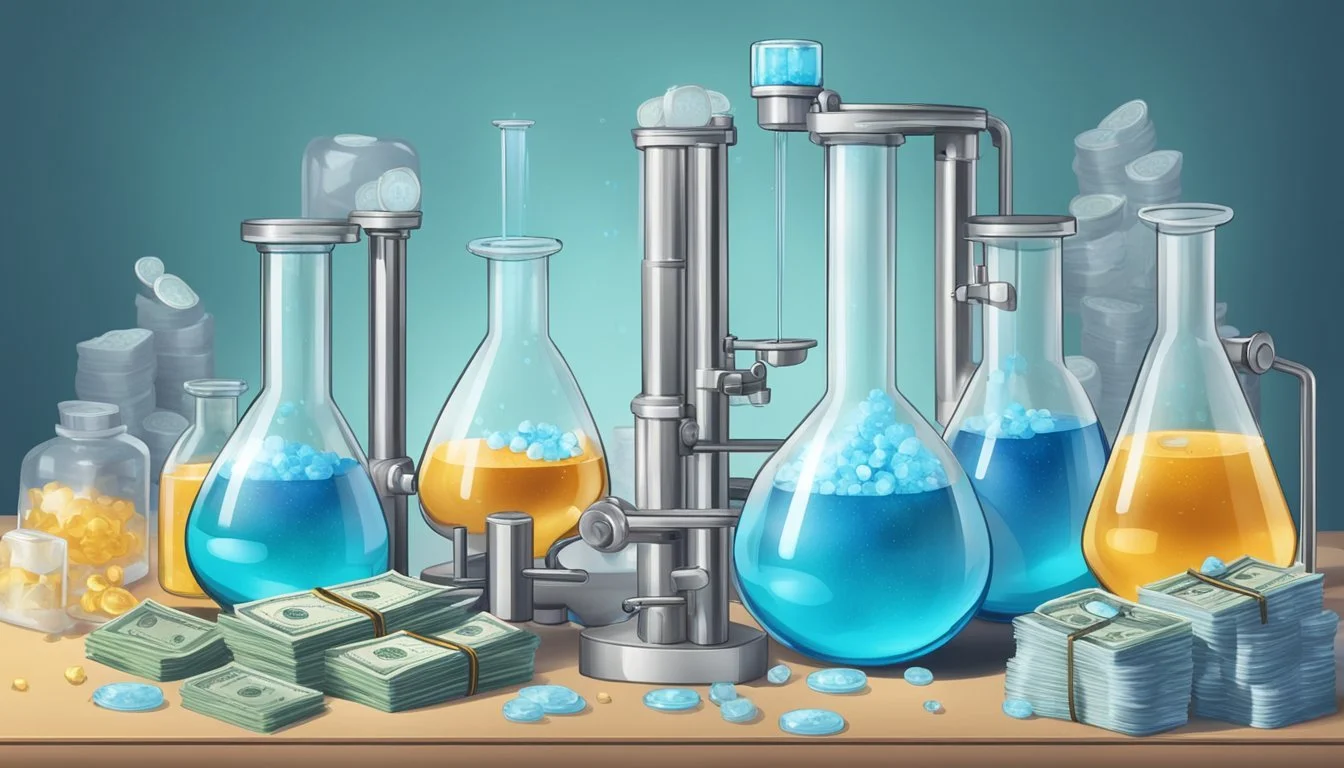Unmask the Characters: Discover the Shocking Breaking Bad Personality Types!
Breaking Bad captivated audiences with its complex characters and gripping storylines. The show's success can be attributed in part to the diverse personalities of its cast, which can be analyzed through the lens of the Myers-Briggs Type Indicator (MBTI).
The 16 MBTI personality types offer insights into the motivations and behaviors of Breaking Bad's characters, from Walter White's calculated INTJ mindset to Jesse Pinkman's emotionally-driven ISFP nature. This psychological framework provides a deeper understanding of the characters' decisions and interactions throughout the series.
Exploring the personality types in Breaking Bad reveals how different traits contribute to the show's intricate dynamics. The MBTI analysis adds an extra layer of depth to the American neo-western crime drama, allowing viewers to appreciate the nuanced character development that made the series a television landmark.
The Framework of MBTI
The Myers-Briggs Type Indicator (MBTI) is a widely used personality assessment tool. It categorizes individuals into 16 distinct personality types based on four key dichotomies:
Extraversion (E) vs. Introversion (I)
Sensing (S) vs. Intuition (N)
Thinking (T) vs. Feeling (F)
Judging (J) vs. Perceiving (P)
Each personality type is represented by a four-letter code. For example, INTJ stands for Introverted, Intuitive, Thinking, and Judging.
The MBTI framework helps people understand their preferences in how they perceive the world and make decisions. It can provide insights into strengths, weaknesses, and potential career paths.
While MBTI is popular, it's important to note that personality is complex and multifaceted. The 16 types are not rigid categories but rather general patterns of behavior and thinking.
Critics argue that the MBTI lacks scientific validity. Proponents, however, find it useful for self-reflection and improving interpersonal relationships.
When applied to fictional characters, like those in Breaking Bad, MBTI can offer an interesting lens for analyzing their motivations and behaviors. It can help explain why characters make certain choices or react in specific ways to situations.
Breaking Bad and Character Analysis
Breaking Bad's characters showcase complex personalities that evolve throughout the series. Their distinct traits and motivations drive the narrative, creating a rich tapestry of human behavior.
Walter White: An Evolving Personality
Walter White begins as an INTJ (The Architect) - intelligent, strategic, and reserved. His cancer diagnosis triggers a transformation from a mild-mannered chemistry teacher to the ruthless drug lord Heisenberg.
As Heisenberg, Walter's INTJ traits intensify. He becomes more calculating, manipulative, and focused on long-term goals. His ability to plan meticulously and think several steps ahead proves crucial in the drug trade.
Walter's journey illustrates how extreme circumstances can amplify inherent personality traits. His transition from a law-abiding citizen to a criminal mastermind is rooted in his innate strategic thinking and desire for control.
Jesse Pinkman: Moral Complexities
Jesse Pinkman, often classified as an ESFP (The Entertainer), provides a stark contrast to Walter. His impulsive nature and emotional decision-making frequently clash with Walter's calculated approach.
Jesse's personality type makes him more susceptible to the emotional toll of their illegal activities. He struggles with guilt and moral dilemmas, showing a depth that goes beyond his initial portrayal as a carefree drug dealer.
Throughout the series, Jesse's ESFP traits evolve. He becomes more introspective and develops a stronger moral compass, leading to significant conflicts with Walter.
Saul Goodman: The Slick Facilitator
Saul Goodman embodies the ENTP (The Debater) personality type. His quick wit, adaptability, and gift for manipulation make him an invaluable asset to Walter and Jesse's operation.
As a lawyer, Saul's ENTP traits shine through in his creative problem-solving and ability to talk his way out of any situation. His moral flexibility aligns perfectly with the criminal world he operates in.
Saul's personality remains relatively consistent throughout Breaking Bad, serving as a reliable constant in the ever-changing landscape of the drug trade.
Skyler White: Pillar of Support
Skyler White, often typed as an ESFJ (The Consul), initially serves as a grounding force for Walter. Her strong sense of morality and concern for her family's well-being drive her actions.
As she becomes aware of Walter's criminal activities, Skyler's ESFJ traits lead her to prioritize family stability above all else. She reluctantly becomes complicit to protect her children and maintain a semblance of normalcy.
Skyler's character arc demonstrates how even the most principled individuals can be pushed to compromise their values when faced with extreme circumstances.
Hank Schrader: Pursuit for Justice
Hank Schrader, an ISTJ (The Logistician), represents the law enforcement perspective in Breaking Bad. His methodical approach and unwavering commitment to justice make him a formidable opponent for Walter.
Hank's ISTJ traits are evident in his attention to detail and persistence in pursuing leads. His by-the-book approach initially blinds him to Walter's criminal activities, but once aware, he becomes relentless in his pursuit.
The clash between Hank's rigid moral code and Walter's flexible ethics creates some of the most tension-filled moments in the series.
Gustavo Fring: The Cautious Drug Lord
Gustavo Fring, like Walter, is often typed as an INTJ (The Architect). His meticulous planning and ability to maintain a facade of normalcy make him a formidable drug kingpin.
Gus's INTJ traits are evident in his long-term strategic thinking and attention to detail. His cautious approach and ability to compartmentalize his criminal activities allow him to operate undetected for years.
The conflict between Walter and Gus showcases a battle of wits between two masterminds, each trying to outmaneuver the other using their shared INTJ strengths.
Mike Ehrmantraut: The Supportive Soldier
Mike Ehrmantraut, an ISTP (The Virtuoso), brings a pragmatic and skilled approach to his role in the drug trade. His calm demeanor and practical problem-solving abilities make him an invaluable asset.
Mike's ISTP traits are evident in his hands-on approach to solving problems and his ability to remain cool under pressure. His loyalty to Gus and later reluctant partnership with Walter stem from his practical nature.
Mike's character provides a counterpoint to the more emotionally driven decisions of other characters, often serving as the voice of reason in chaotic situations.
Understanding Personalities in a Criminal World
Breaking Bad explores complex characters navigating morally ambiguous situations in Albuquerque's criminal underworld. The show's diverse personas reveal how different personality types react when faced with difficult choices and dangerous circumstances.
Moral Questions and Breaking Bad
Walter White's transformation from high school teacher to drug kingpin raises profound ethical dilemmas. His actions force viewers to contemplate how far they might go to provide for their families.
Jesse Pinkman's journey illustrates the struggle between self-preservation and moral conscience. His internal conflicts highlight the psychological toll of criminal activities.
Skyler White's character arc demonstrates how ordinary people can become entangled in criminal enterprises. Her evolving role challenges assumptions about complicity and survival.
Diversity of Personalities in Crime Drama
Breaking Bad showcases a wide range of personality types operating within Albuquerque's criminal ecosystem. Gus Fring's calculated ruthlessness contrasts sharply with Tuco Salamanca's volatile unpredictability.
Saul Goodman's amoral opportunism provides a different perspective on survival in the underworld. His adaptability and wit serve as coping mechanisms in a dangerous environment.
Hank Schrader's by-the-book approach to law enforcement clashes with the criminals he pursues. His personality type struggles to reconcile personal relationships with professional duty.
Marie Schrader's kleptomaniac tendencies reveal how even those on the periphery of crime can be drawn into morally questionable behavior.
The Impact of Breaking Bad on Popular Culture
Breaking Bad revolutionized television and left an indelible mark on popular culture. Its complex characters and gripping storylines captivated audiences worldwide, sparking discussions about morality and human nature.
Media Influence and Personality Perceptions
Breaking Bad's portrayal of complex characters shaped viewers' perceptions of personality types. Walter White's transformation from a mild-mannered chemistry teacher to a ruthless drug lord fascinated audiences. Bryan Cranston's nuanced performance highlighted the multifaceted nature of human personalities.
The show's depiction of Jesse Pinkman, played by Aaron Paul, challenged stereotypes about drug addicts. His character arc explored themes of redemption and personal growth.
Breaking Bad's influence extended beyond its characters. The series popularized the antihero archetype in television, paving the way for morally ambiguous protagonists in other shows.
From Breaking Bad to Better Call Saul and El Camino
Breaking Bad's cultural impact spawned two successful spin-offs: Better Call Saul and El Camino: A Breaking Bad Movie. Better Call Saul delved into the backstory of lawyer Saul Goodman, expanding the Breaking Bad universe.
El Camino provided closure for Jesse Pinkman's character, satisfying fans' curiosity about his fate after the series finale. These spin-offs demonstrated the enduring appeal of Breaking Bad's characters and storytelling.
The success of these spin-offs cemented Breaking Bad's status as a cultural phenomenon. They allowed fans to further explore the show's rich universe and complex personalities.
Breaking Bad: Legacy and Learning
Breaking Bad left an indelible mark on television history. The show's gripping portrayal of Walter White's transformation from mild-mannered chemistry teacher to ruthless drug lord captivated audiences worldwide.
At its core, Breaking Bad explored the consequences of choices and the blurred lines between good and evil. The series became a cultural touchstone, sparking discussions about morality, power, and the human capacity for change.
The show's impact extended beyond entertainment. It sparked interest in chemistry and the science behind drug synthesis. Many educators used Breaking Bad as a teaching tool to engage students in discussions about ethics and the real-world applications of scientific knowledge.
Walter White's lung cancer diagnosis served as a catalyst for his journey. This storyline raised awareness about the disease and its far-reaching effects on individuals and families.
Breaking Bad's legacy continues through its spin-off Better Call Saul and the follow-up film El Camino. These extensions of the Breaking Bad universe further cemented its status as a television milestone.
The series' influence can be seen in:
Increased enrollment in chemistry courses
Renewed interest in the antihero archetype in media
Heightened awareness of the methamphetamine epidemic
A new standard for serialized storytelling in television
Breaking Bad's blend of compelling characters, intricate plotting, and moral complexity ensures its place in the pantheon of great television dramas.



